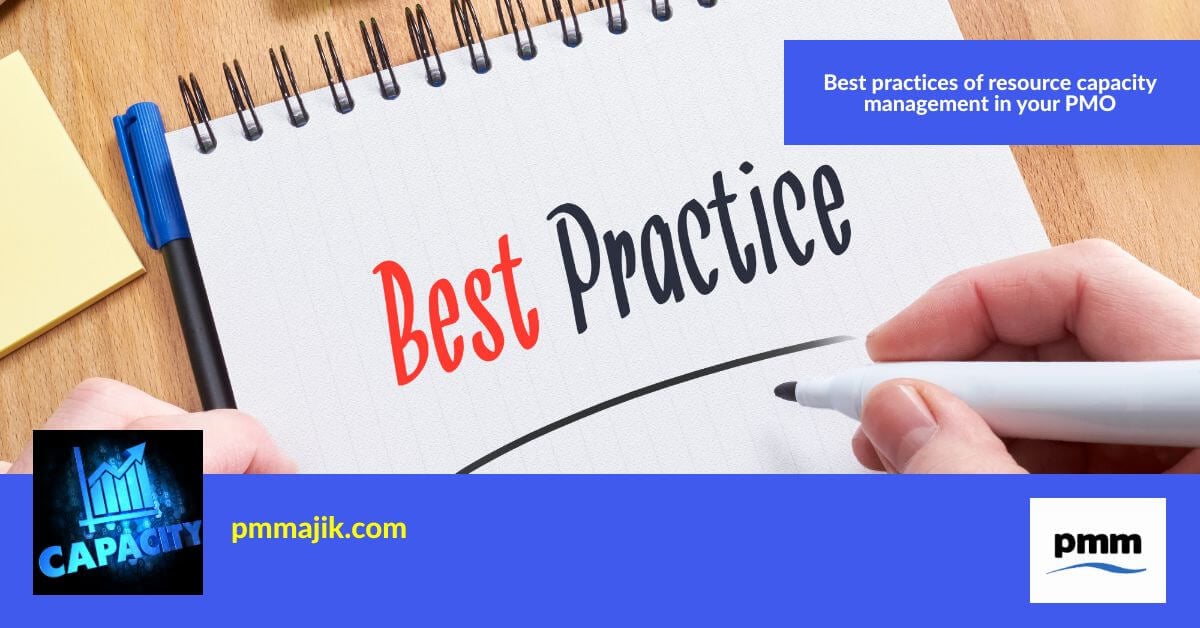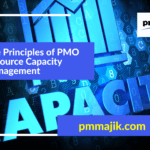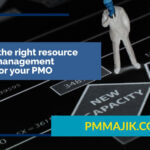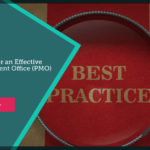Accurately predicting your resource needs will make your project management office (PMO) run smoothly. To ensure that your PMO can predict budgets well, it’s important to implement best practices of resource capacity management.
Understanding what resources are available to your PMO, in terms of people, space, machinery, or software, will make your planning much more efficient. Here, we’ll explore:
- The aims of good resource capacity management
- Six key practices of PMO resource capacity management
- Examples of implementing these practices
Meaning you’ll be in a good position to get a grip on the resources that you’re responsible for.
Why is resource capacity management important to my PMO?
The biggest resource under your PMO is going to be the people. This is where the majority of your budget will be spent and much of your management time will also be consumed by this.
There are other resources that you’ll be in charge of, too. Having best practices in place in your PMO is going to make your PMO improve:
- Productivity
- Quality of outcomes
- Cost efficiencies
- Opportunity utilisation
Good resource capacity management isn’t just about high levels of utilisation. You need to ensure that your resource capacity management is focussed on accurate deployment.
Here are some practices you need embed into your PMO’s resource capacity management.
Principles of Resource Capacity Management
1. Focus on scarcity
You need to have a full overview of the resources under your control. Knowing what’s scarce, whether it be programming languages within your developer pool or software licences, will give you a place to focus on.
To keep resources from being scarce, be involved in project decisions from the beginning. Have someone from your PMO on the inside during project requirement gathering stages.
2. Ensure a common approach to priorities
A key responsibility of your PMO’s resource capacity manager is to plan how to prioritise your resource demands. This will give your project fair and necessary resource allocation, with an allowance for fluidity.
Be sure to understand how unplanned and ad hoc work will play into this. Processes are important but understanding how that can change is also going to keep things running smoothly.
3. It’s an ongoing process
Your resource management isn’t just about allocating people and places to a project the beginning. Keeping on top of your resources regularly is going to keep your PMO efficient and reduce the chances of having under deployed resources.
Keep your resource capacity manager in the loop on up coming projects. If your PMO is in charge of commissioning projects, build capacity planning into your planning processes.
4. Align your resource allocation with strategy
Projects, ultimately, are about delivering on the business strategy. It’s important that your resources are used in a way that will deliver growth for the company’s bottom line.
By using the right software for your resource management, you can be sure you’re looking at the big picture, rather than just inputting data.
5. Account for losses
No project will run perfectly, no matter how great your PMO is. Losses around downtime for machinery or sickness absences for your people need to be accounted for.
Through past data analysis, your PMO will be able to estimate average losses over time. Building these potential losses into your planning resource management will make your office’s predictions more realistic.
Note: it is important in any planning not to base estimates and plans on full utilization. See Why you should not plan your projects on 8 hour days.
6. Maintain your assets
Whether we’re talking about your software, logistics fleet, or your people, you need to keep everything running well. With good maintenance, you should be able to reduce your losses, making your PMO more efficient in the long run.
Having good training and development for your human resources will keep your project teams engaged. Ensuring your computer networks are looked after with up to date software will prevent issues with viruses or downtime.
The take home
It’s important to embed best practices into your PMO to ensure that everyone is working to the same aim. When everyone in your office is aware of what good resource capacity management looks like, the office will be better placed to deliver on project targets.
Instilling best practices in your PMO’s resource capacity management, such as having the right focus, robust processes, a long-term view, an eye on business strategy, and the ability to understand and manage losses, will ensure your office is effective within the business.






